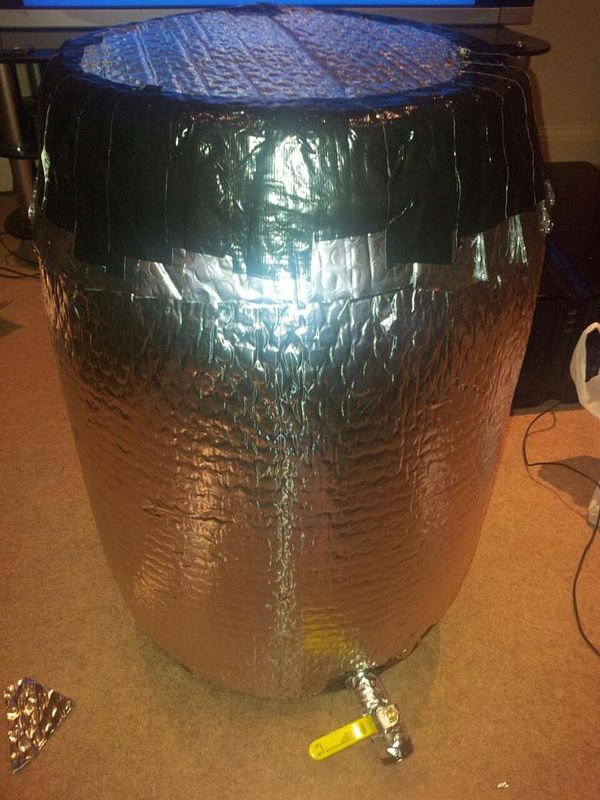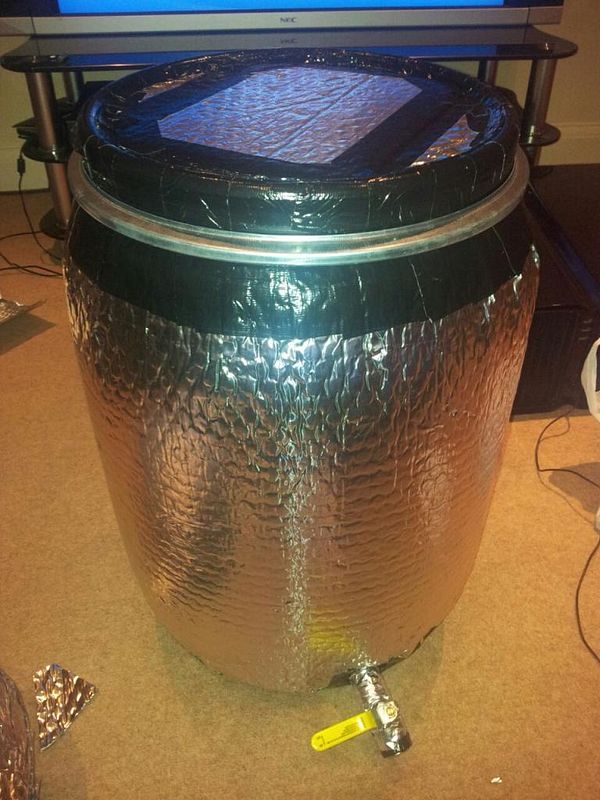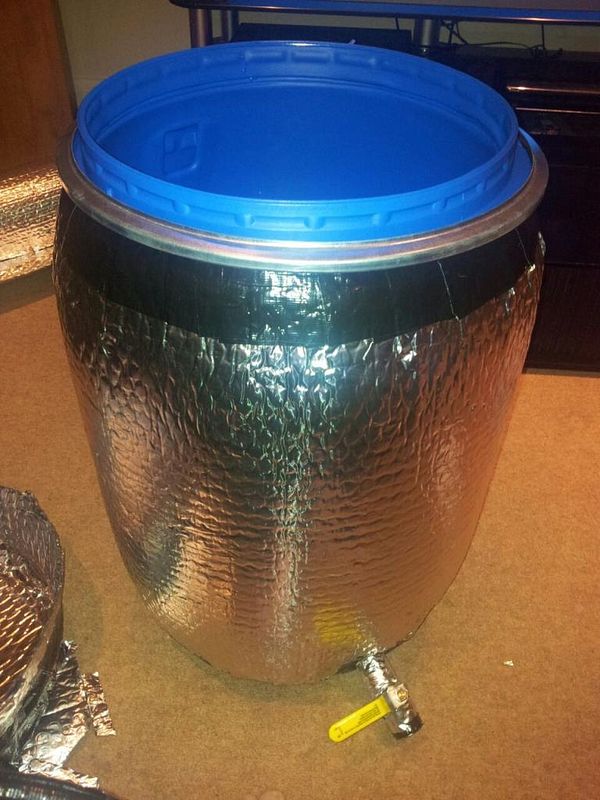Hi Guys
I moved to a flat that has an electric stove top rather than gas; I figured this wasn't going to be good enough to keep stable temps for my partial mash brews. After investigating mash tuns and deciding they were rather expensive for what is essentially a chilly bin, I thought I'd have a crack at making my own. The results:



And yes, I realise the tap looks a little lewd :lol:
With a partial mash of under 10L, the temp only dropped around 4c over an hour, so should be even less when doing all grain mashes but this leads me to another problem. With a 10L pot, the electric hob struggles to bring the wort up to boil. I can't imagine it will fare very well with 23L plus. Would I be able to get a couple of kettle type elements and dangle them into the mash tun to boil once the grain bag has been removed? This would be ideal as A. I would lose far less temperature than having to pour into another pot, so it should be easier to get up to a rolling boil and B. it would mean minimal extra equipment to be able to move to all grain.
Thoughts?
I moved to a flat that has an electric stove top rather than gas; I figured this wasn't going to be good enough to keep stable temps for my partial mash brews. After investigating mash tuns and deciding they were rather expensive for what is essentially a chilly bin, I thought I'd have a crack at making my own. The results:



And yes, I realise the tap looks a little lewd :lol:
With a partial mash of under 10L, the temp only dropped around 4c over an hour, so should be even less when doing all grain mashes but this leads me to another problem. With a 10L pot, the electric hob struggles to bring the wort up to boil. I can't imagine it will fare very well with 23L plus. Would I be able to get a couple of kettle type elements and dangle them into the mash tun to boil once the grain bag has been removed? This would be ideal as A. I would lose far less temperature than having to pour into another pot, so it should be easier to get up to a rolling boil and B. it would mean minimal extra equipment to be able to move to all grain.
Thoughts?




